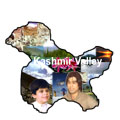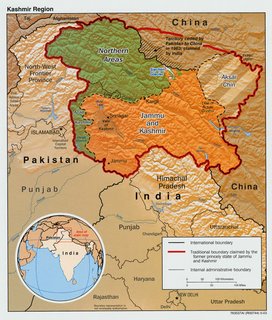 |
Kashmir Introduction Located
in India / Pakistan / China
Ladakh
is actually a region of Kashmir, and Zanskar a sub-district
of Ladakh. They are geographical neighbors but, separated
by the full height of the Himalaya's, they are worlds apart
in terms of people, culture, religion and terrain. Kashmir is an ancient country. It has long been disputed, due to its strategic location. The country was originally a stronghold of Hinduism; Buddhism was introduced about 245 BC. Beginning in the mid-14th century AD, Muslim sultans controlled the area for two centuries. Akbar, the Mughal emperor of Hindustan, conquered Kashmir between 1586 and 1592, and it became a part of the Mughal empire. Between 1756 and 1819 it was under Afghan rule. In 1819 Kashmir was conquered by Ranjit Singh, the Sikh maharaja of the Punjab. In 1846 Kashmir was annexed to the (Hindu) Dogra kingdom of Jammu. The Dogra dynasty continued to rule the region until August 1947, when British India was partitioned into a predominantly Muslim Pakistan and a predominantly Hindu India. Following partition, a section of the Muslim population of Kashmir demanded accession to Pakistan. The reigning maharaja, Sir Hari Singh, a Hindu, resisted the pro-Pakistani movement. Pakistan invaded the area, after which the maharaja signed the Instrument of Accession to the Indian Union. India thereupon dispatched troops to Kashmir and in the ensuing conflict forced the Pakistanis to yield ground. Through mediation organised by the United Nations (UN), a cease-fire agreement between the two nations was concluded in January 1949.
|

